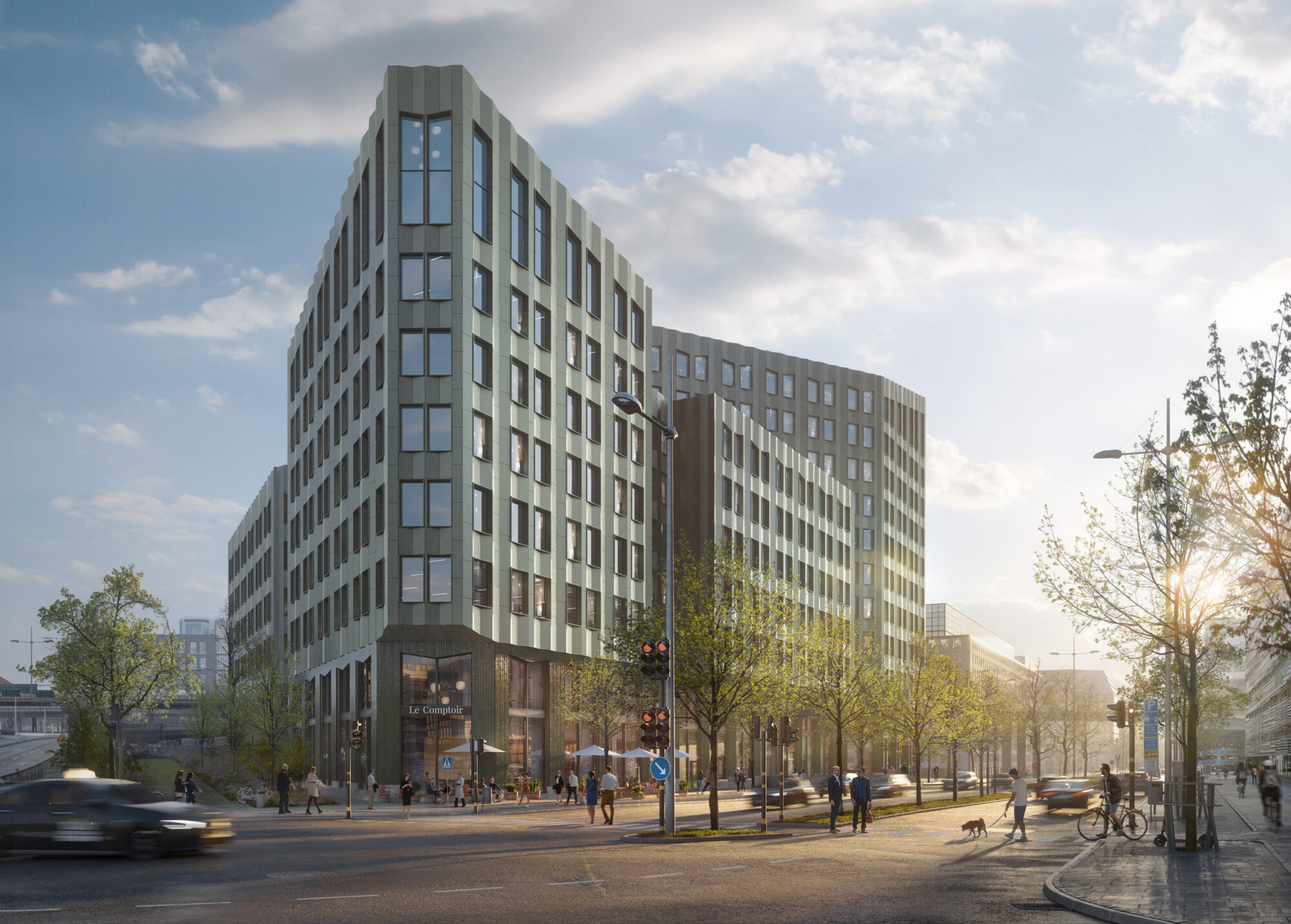2024-05-24
Modern Art Nouveau takes place on Kungsholmen with the new Olivin office building
Like a shimmering green jewel, Olivin will shine as one of Stockholm's most attractive office buildings. The final decisions have now been made on the design of the pleated facade. FOJAB has designed the office building on the so-called triangle plot on Kungsholmen for Skanska after parallel assignments.
Ground has been broken in the Lindhagenskvarteren district in northwestern Kungsholmen, one of the last major developments in Stockholm's inner city. The area will be linked to the urban structure of eastern Kungsholmen, bringing previously separate islands of development closer together.
This is where the new Olivin office building plays an important role. When the triangular plot with Essingeleden on one side, Lindhagensgatan on the other and residential buildings on the third side is now developed, a missing piece of the puzzle is finally put in place.
- The streetscape has been broken with a gap on Lindhagensgatan that Olivin is healing. The street will have more of an esplanade character with living facades on both sides - as Albert Lindhagen originally intended in the city plan from the 1870s," says responsible architect Ylva Åborg at FOJAB.
Olivin will be a proud brand building that acts as a unifying node for the area. A clear destination with content that attracts both workers and visitors and creates new flows in the city. Olivin is a building for work, socializing and recreation with workplaces, social areas, sauna and roof terraces. The entrance floor invites people along Lindhagensgatan with public spaces on the ground floor. The offices start one level up but trickle down to the ground floor with shared spaces and activities that create an active building and a safer street space.
- The building's design language is linked both to the historic city plan and to the triangular shape of the site. The design is stripped down and stringent but with modern and playful elements - a kind of modern Art Nouveau that brings nature into the design and connects to the time when Lindhagensgatan was built, says Ylva Åborg.
Inspiration is drawn from the green stone olivine and its angular, slightly sharp shape. The prism as a geometric figure recurs in all scales, in folds and reliefs on the facade and in the division of the 23,000 square meter volume into several smaller units. The building is higher towards Essingeleden, while it is stepped down towards the small-scale buildings to the southeast. The corners are cut to create a more inviting form that relates better to Stockholm's classic building order.
- And even if the scale is broken down, the building should be perceived as a monolith and the different parts as a whole," says Ylva Åborg.
Skanska's ambition is LEED Platinum environmental certification. Parts of the frame will be built in wood. The building will be ready for occupation in 2026.
